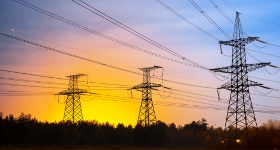
An electric blanket uses only 100 to 200 watts of electricity, yet can warm as well as a radiator that draws thousands of watts. Here's how to choose an electric blanket.
An electric blanket can be used when sleeping or when watching television curled up on the couch. The direct localized heat doesn't only save energy; it also allows people with different temperature tolerances to comfortably share the same room or bed (many have dual controls): no more fighting over the thermostat.
Electric blankets are in many ways similar to conventional blankets. They have the same:
- Sizes – single, double (king, queen).
- Fabrics – vellux, fleece (polyester), acrylic.
- Problems – pilling and shedding of fluff is possible with lower quality blankets. A comforter or duvet cover can be used to reduce shedding.
- Types – overblanket (normal bed blanket), throw or chair blanket, underblanket (mattress pad).
Electric Blankets Versus Mattress Pads
There are two ways to warm up with electricity:
- Sleeping with a warmer above (electric blanket or overblanket).
- Sleeping with a warmer below (electric mattress pad or underblanket).
Mattress pad advantages:
- Heat rises, so more of the heat is available. Both the sheet below and the blanket above are warmed up.
- Always lies flat and doesn't move around or bunch up. This reduces the chance of forming dangerous hot spots. There is also less stress on the heating wires, possibly making them last longer.
Mattress pad disadvantages:
- Can only be used or placed over your mattress, unlike a throw blanket that can be used when sitting in a chair.
- Buzzing noise from the heating wires can be a problem. Unlike blankets, mattress pads are placed immediately beneath the pillow and any buzzing will be easily heard at night.
The rest of this article will not differentiate between electric blankets and mattress pads. When referring to electric blankets, electric mattress pads are also included.
How to Choose an Electric Blanket
Manufacturers often don't specify the watts used by a blanket. One way to measure the wattage is to use a home wattmeter such as the Kill-a-watt.
Reliability is important as blankets that stop heating after a few days or months, is a common complaint voiced by customers who write consumer reviews on online shopping websites such as Amazon. A good way to find a reliable brand and model is to search the internet for consumer reviews.
Users who are worried about safety should look for electric blankets certified by the Underwriters Laboratory (UL). Other features to look out for include:
- Machine-washable. Even for machine-washable blankets, hand-washing in a large tub puts less stress on the electrical wires and might increase the blanket's life.
- Thermostat control. Some blankets have more than one thermostat sensor (for each thermostat control), allowing more heat to be sent to where it is needed.
- Multiple power or temperature settings. Some only have one setting, others can have 3 or 10 or 20. However having a temperature control also means more chances of something failing.
- Dual controls for double blankets, to allow different temperatures to be set on each side of the bed.
- More heating wires (more heat) at the bottom: to warm the feet.
- Low DC voltage (typically 12v). The 110 to 120 volts mains voltage is stepped down before being sent to the blanket. Some manufacturers claim that this is safer. DC voltage should also eliminate any buzzing noises.
- Auto-off safety. Many automatically switch off after 10 hours. This is a safety feature and cannot be disabled.
- Power cord lock, to stop the blanket from accidentally unplugging in the middle of the night.
- Automatic preheat. This runs the blanket for 15 to 60 minutes on high after it is switched on. One disadvantage is that it can get too hot if the blanket is accidentally reset after being switched on for a few hours.
- Small and flexible "invisible" heating wires. Small wires are more comfortable.
- Electrical sockets located at the corner or side. Sockets placed in the middle of the bottom edge are uncomfortable as they are easy to kick.
The Best Electric Blanket
Electric blankets can save on the heating bill while providing superior comfort at the same time. Unfortunately reliability problems mean that other heating solutions should also be considered (or kept as a backup in case the blanket fails):
- Small and thick electrical heating pads (designed to relieve muscle aches) are cheaper and possibly stronger and more reliable.
- Classic rubber or plastic hot water bottles are still a practical heating solution.
- To preheat a cold bed, an electrical hair dryer can be used.
Anyone thinking of buying an electric blanket would be well advised to search the internet for reports of reliability issues with specific models and brands. Reliability is more important than any other feature.
